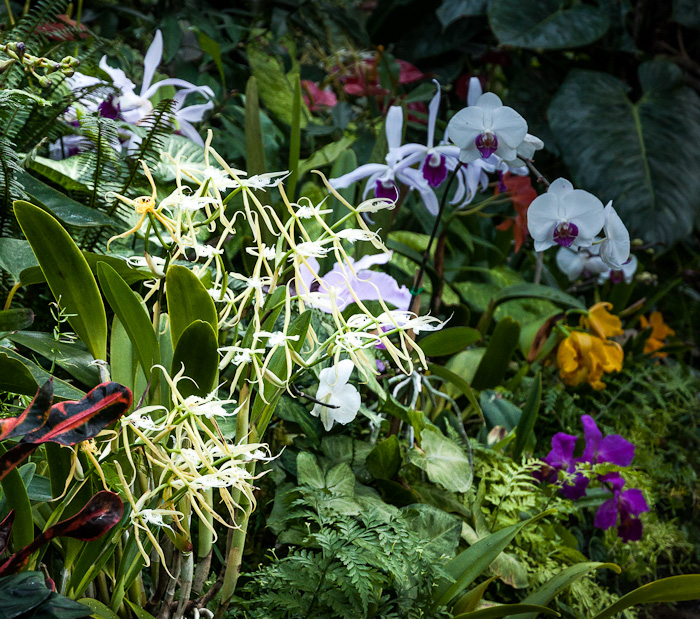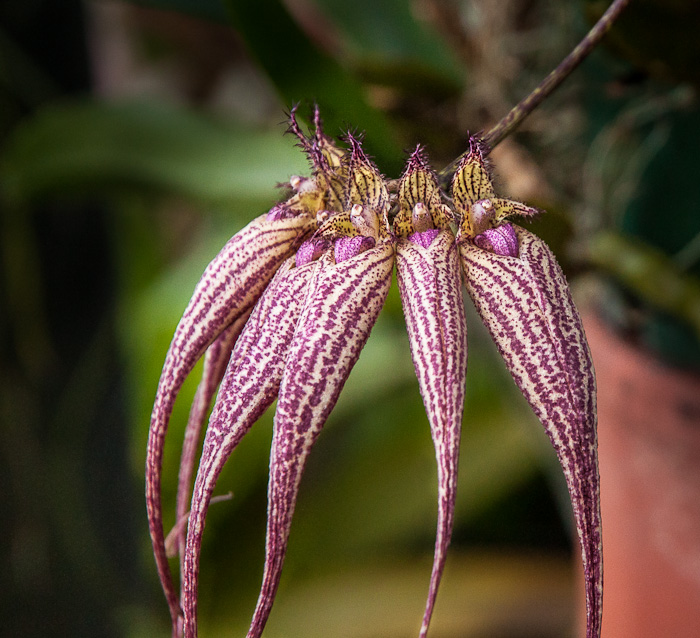Although the conservatory at the Wellington Botanic Garden is called the Begonia House it shelters a wonderful range of tender and tropical plants. The attraction of their exotic colours and shapes, not to mention the shelter and warmth provided for them, is particularly strong in winter. When I visited it this week, the busy web of spidery white flowers in front of more familiar orchid shapes caught my eye.

The label said Epidendrum ciliolaris, but I subsequently read that in 2004 it was renamed Coilostylis ciliaris. It is also known as hairy-lip epidendrum (!) or fringed star orchid. It is from Central America and South America to Brazil. It grows in wet warm conditions, and flowers in winter and spring.

The white and whitish green flowers are fragrant at night - attracting moths which pollinate them. But it was daytime and I could not detect a perfume. They were in the warmest most moist area of the conservatory - I think of it as having a lush jungle-y feel.
Tillandsias, the so-called air plants, grow without soil and perch on other plants but get no nourishment from them. Their leaves are narrow and greyish in colour and in the conservatory they are displayed on a stylish metal frame, so the area has a very different feel - drier, more austere. But lo, another spidery orchid was to be seen there...

Cirrhopetalum Elizabeth Ann 'Buckleberry'.
This is a hybrid which gained the highest award given by the American Orchid Society.It is apparently easily grown, and the photographs online, taken by enthusiastic orchid growers, show plants with many of these dangling groups of flowers. But I have little other information about it part from the fact that it is also epiphytic and the name refers to the fringed petals - a naughty mix of Latin (cirrus - fringe) and Greek (petalon - petal). The namer was not a purist.

These flowers are like the Coilostylis in that they both feature fringing and what I think of as a spidery appearance - but how different they are. I started wondering about my use of the word spidery. I was not suggesting they they were infested with spiders - one meaning in the dictionary. And they don't look like a fine spiderweb, as in spidery handwriting. But yes, the long narrow shapes could be a bit like a spider's legs. Just not too literally.
And now, back to winter - another severe southerly storm is predicted.